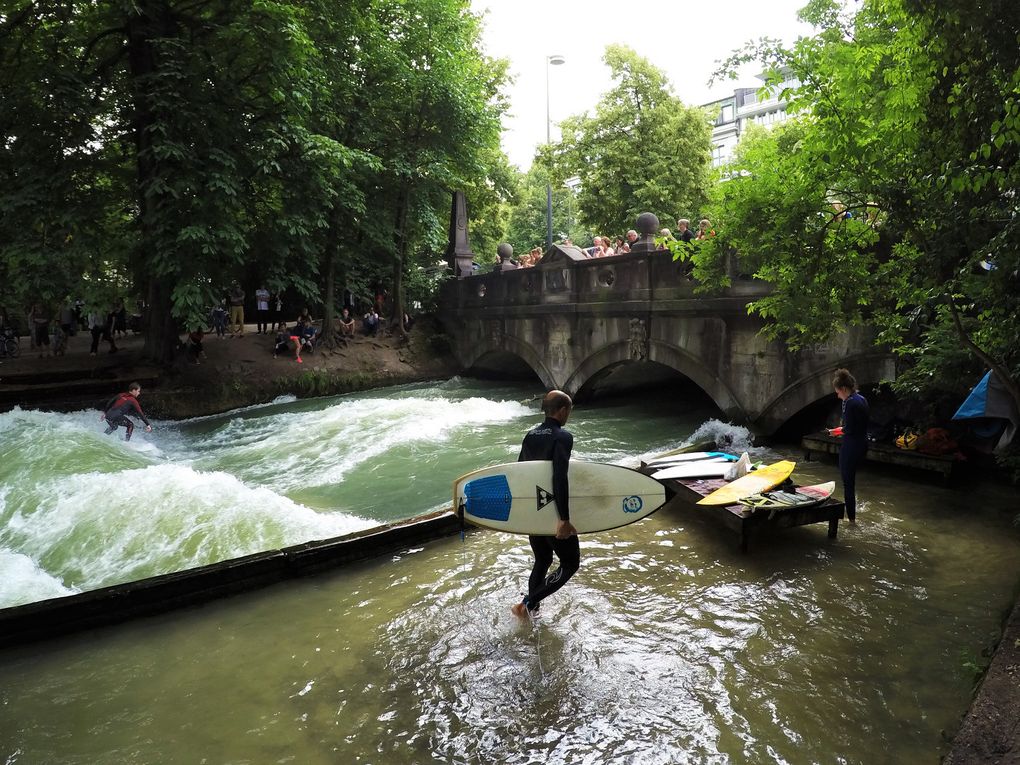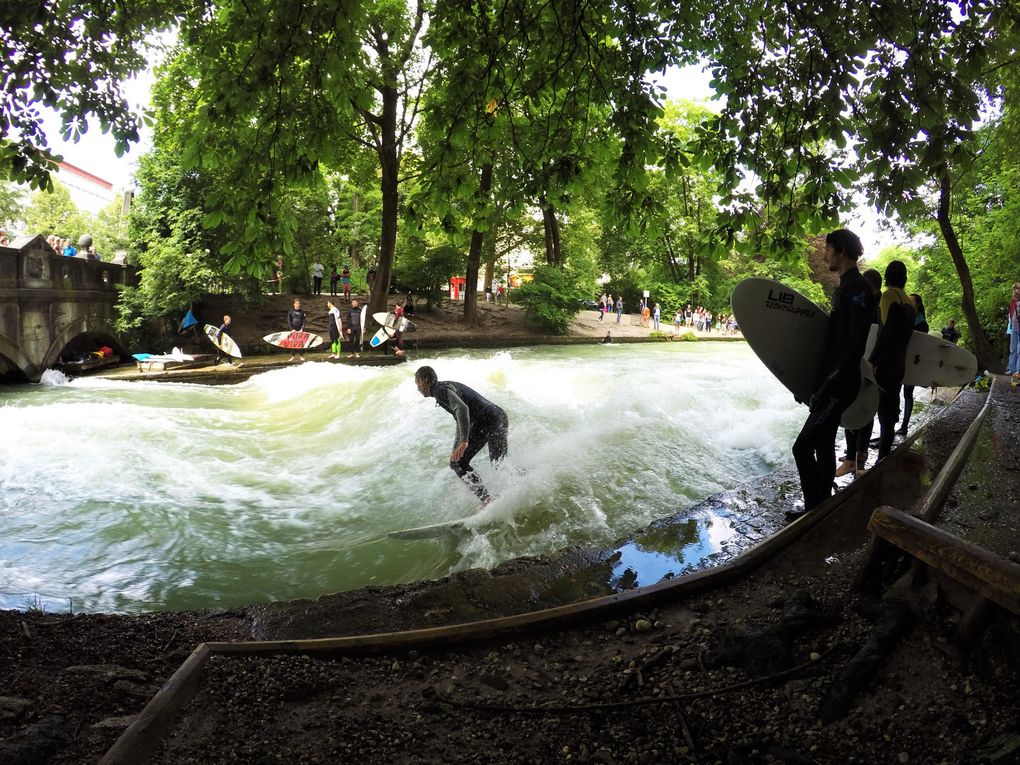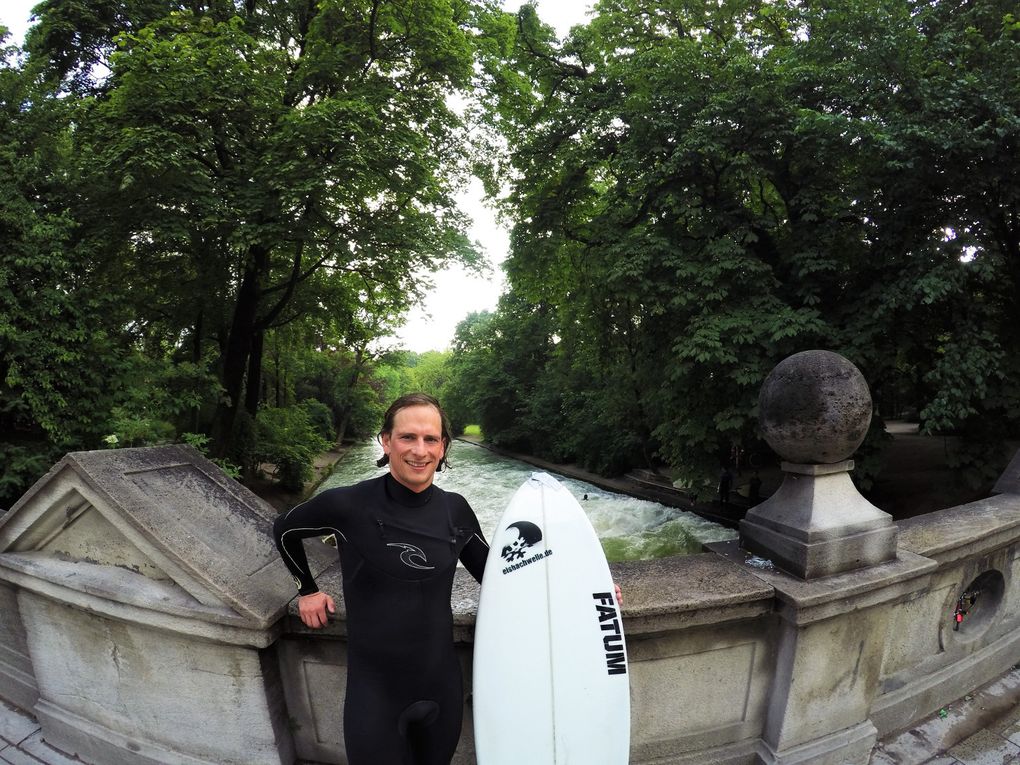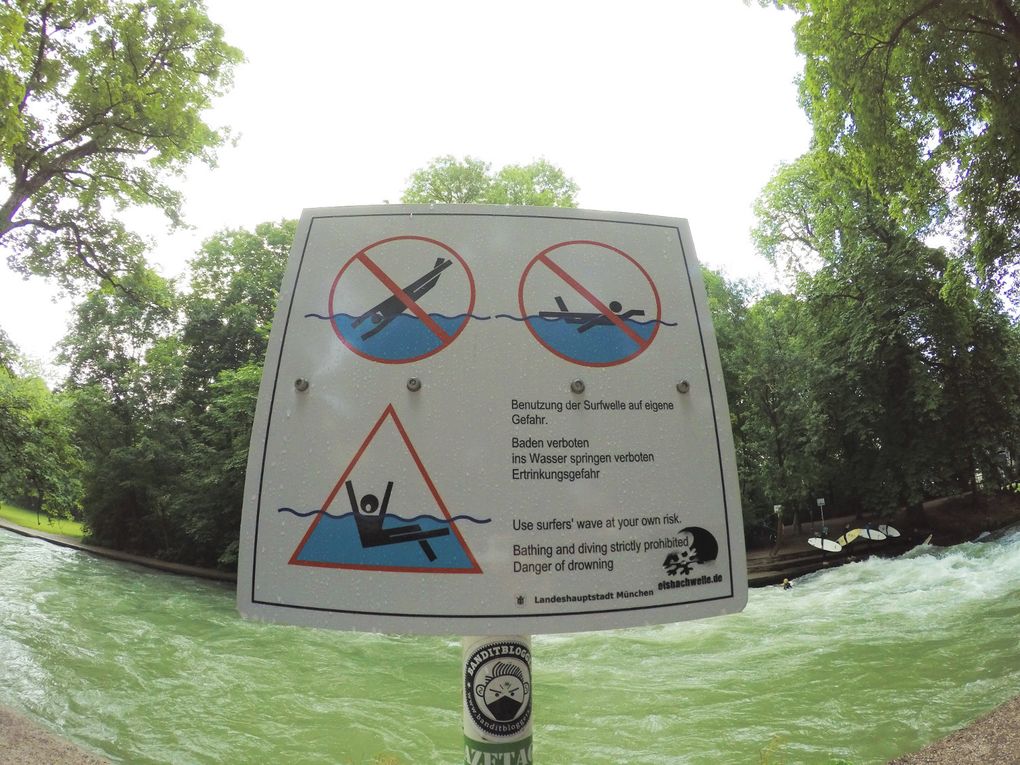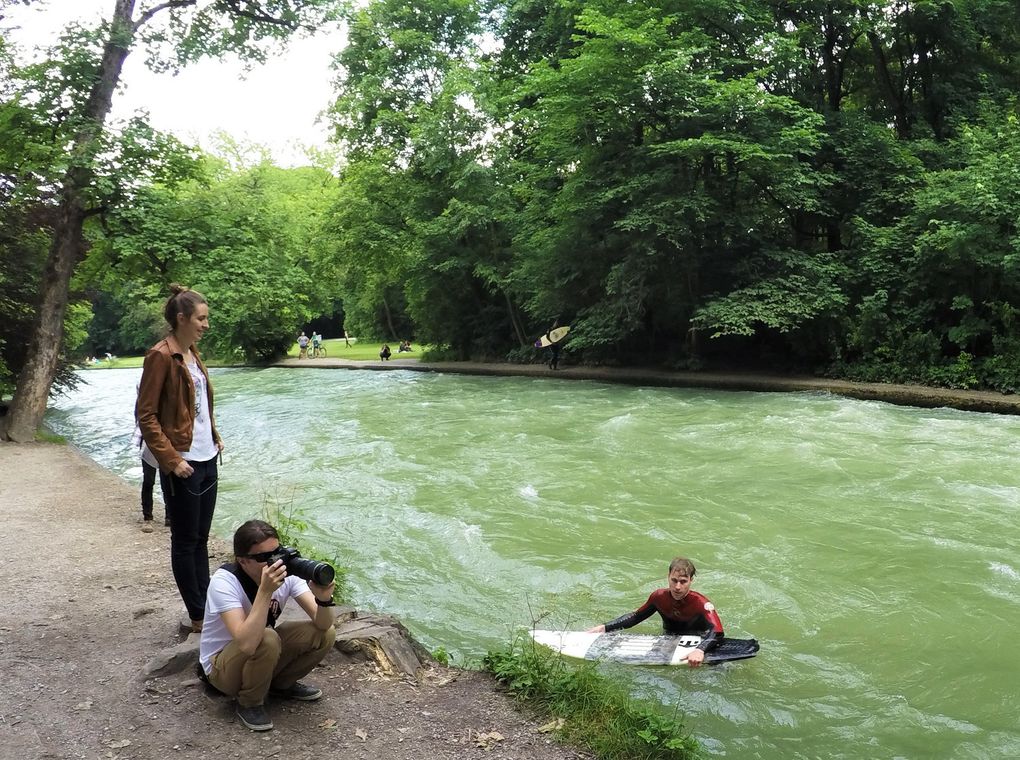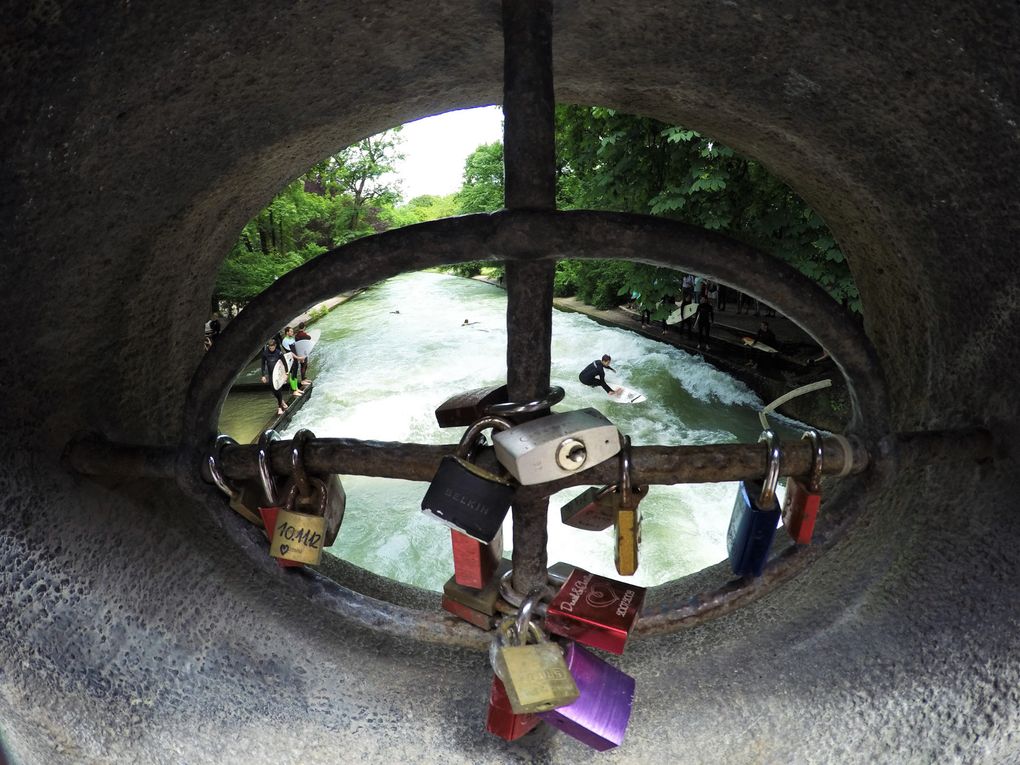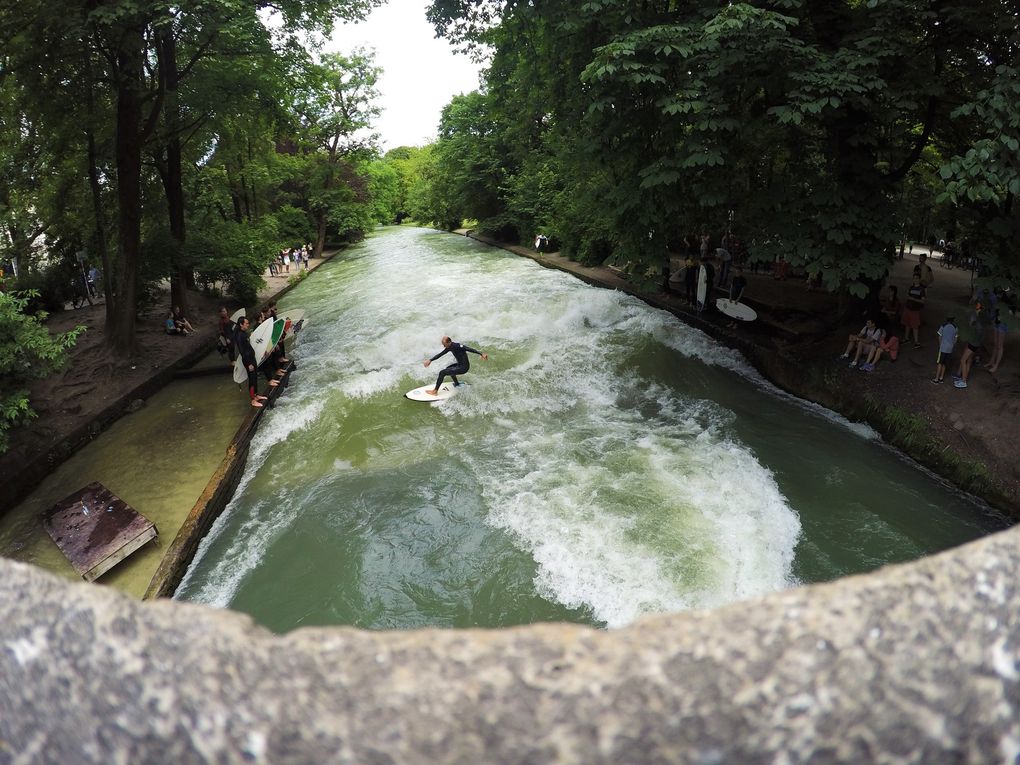It’s just past 6.30am on a sunny Saturday morning in Munich. We’re on our way from the Metro station to the Englischer Garten, or English Garden, one of the largest public urban parks in the world, bigger even than Central Park.
The city is quiet at this time of morning. Barring a few dog walkers and the odd jogger and worker here and there, the streets are largely empty. But as we approach the entrance to the gardens and the start of the 2km Eisbach River which flows through it, we spot a crowd of tourists.
Heading over to the bridge where the tourists are gathered, we hear the roaring of white water and look down to see a surfer riding against the ferocious wave below, with seven surfers waiting on the banks either side. Four on the right, three on the left. Let us remind you, it’s just past 6.30 in the morning.
